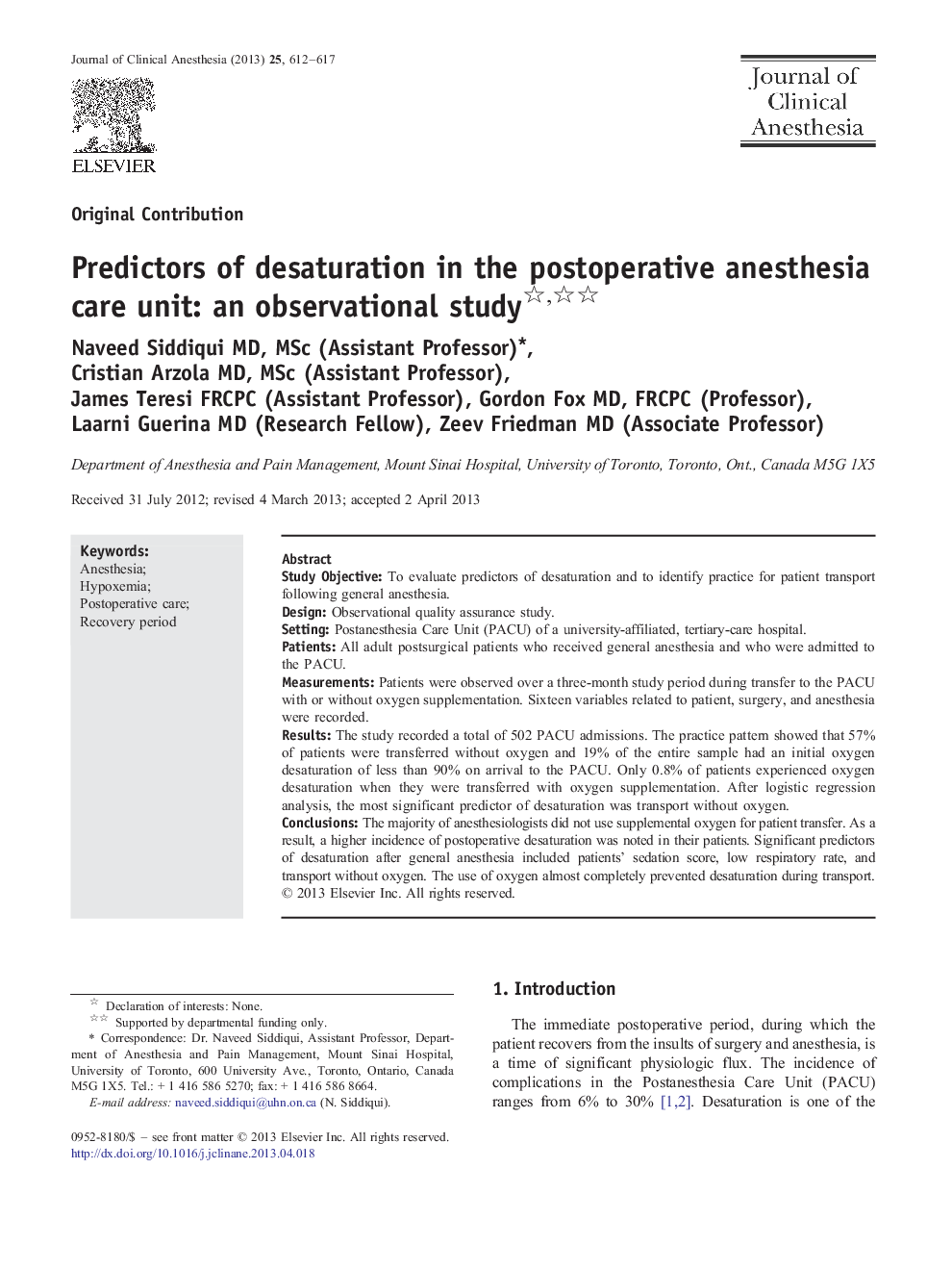| Article ID | Journal | Published Year | Pages | File Type |
|---|---|---|---|---|
| 2762588 | Journal of Clinical Anesthesia | 2013 | 6 Pages |
Study ObjectiveTo evaluate predictors of desaturation and to identify practice for patient transport following general anesthesia.DesignObservational quality assurance study.SettingPostanesthesia Care Unit (PACU) of a university-affiliated, tertiary-care hospital.PatientsAll adult postsurgical patients who received general anesthesia and who were admitted to the PACU.MeasurementsPatients were observed over a three-month study period during transfer to the PACU with or without oxygen supplementation. Sixteen variables related to patient, surgery, and anesthesia were recorded.ResultsThe study recorded a total of 502 PACU admissions. The practice pattern showed that 57% of patients were transferred without oxygen and 19% of the entire sample had an initial oxygen desaturation of less than 90% on arrival to the PACU. Only 0.8% of patients experienced oxygen desaturation when they were transferred with oxygen supplementation. After logistic regression analysis, the most significant predictor of desaturation was transport without oxygen.ConclusionsThe majority of anesthesiologists did not use supplemental oxygen for patient transfer. As a result, a higher incidence of postoperative desaturation was noted in their patients. Significant predictors of desaturation after general anesthesia included patients' sedation score, low respiratory rate, and transport without oxygen. The use of oxygen almost completely prevented desaturation during transport.
